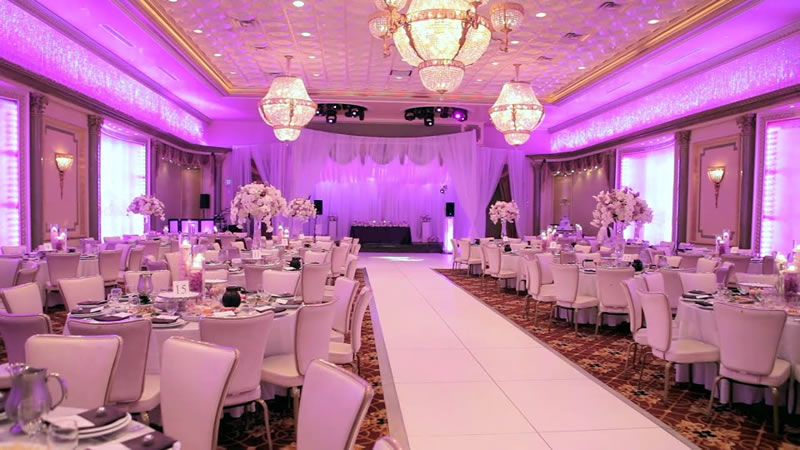The Food
The biggest deciding factor in choosing a restaurant as your wedding venue? The food, of course! It’s a chance to serve a step up from your standard wedding fare, as well as to share a place you love with your family and friends. Don’t be afraid of getting creative here. If you had your first date at a fabulous sushi restaurant, serve those killer rolls as hors d’oeuvres or a sashimi spread as the first course, then follow up with the restaurant’s cooked specialties as a main course. Or if Italian is your jam, family-style platters of pasta are a great way to get guests talking! The one thing to keep in mind? Dessert. If the restaurant has an in-house pastry chef, you might not be able to bring in a traditional wedding cake from an outside baker (or might get caught paying a hefty slicing fee). Discuss this early, and see if the restaurant’s chefs can create a small cake for you—or just serve their famous tiramisu or house-made ice cream instead.
The Price
While a restaurant wedding can be more affordable, don’t go into it expecting a deal. The cost will depend largely on how much of the space you’ll be using. Most restaurants turn over their tables two to three times in an evening (meaning two to three groups dine at each table over the course of the night), so your fee will have to cover the business the restaurant owner is giving up by not making those tables available—especially if you’re doing a full buyout and getting exclusive use of the space. If you’re having a smaller wedding and the venue has a private dining room or more than one dining area, you may be able to do a partial buyout, which will allow the restaurant to operate as usual in one room while hosting your group in the other. The day of the week is also a big part of the price. A full buyout at the hippest joint in town on a Saturday night will cost much more than a lunch wedding at a restaurant that is usually closed during the day.
The Decor
One of the places you’ll definitely save? The decor! Restaurants already have a distinctive style and their own furniture, meaning you won’t have to shell out for hefty rentals. But that doesn’t mean you can’t put your own touch on the space. Talk to the proprietor about what you can bring in, whether it’s renting napkins in a different color or accenting the tables with centerpieces. Does your venue have an eye-catching detail, like an interior courtyard with ivy-covered brick or a cozy stone fireplace? Accentuate what makes the space unique by hosting cocktail hour as the sun sets or pouring coffee while the fire roars.
The Logistics
There are a few key questions you’ll want to go over with your venue before you sign a contract. First, how many people can it realistically accommodate? Since it’ll be serving dinner for everyone at once, make sure you know what the kitchen’s capacity is, as well as how many seats it has. Next, discuss dancing. If you want space for people to get grooving after dinner, that will take away from space for tables and chairs—meaning you can’t fit quite as many guests. A good rule of thumb is to allow a 10-by-10-foot space for dancing with 50 guests, 12 by 12 for 100 guests, and 15 by 15 for 150 guests. Ask your venue if it would be able to move some of the tables once dinner is over to allow for more dancing room. Speaking of dancing, check to see if the restaurant has any noise restrictions. Most are set up for quiet background music, meaning your band or DJ will need to bring in its own sound system.
On top of that, the venue may not be insulated in such a way that keeps louder music from bothering the neighbors—which could mean a quieter dance party for you or an earlier end time. Find out the venue’s parking situation as well. If you’re getting married in a big city, chances are most guests will opt against driving themselves anyway, but it’s important to know what the closest parking options are. If the restaurant is more remote and has its own lot, double check whether using its parking is included in your fee. Last but not least, check on bathrooms. This isn’t something you can easily fix, but it’s important to know how many restrooms are available to your guests. A safe count is to have a stall for every 25 guests if possible, though that number can comfortably go up to a stall for every 50 guests. Just make sure you’re not hosting 100 people in a restaurant with a single bathroom or you’ll end up with guests in line for the loo while you’re cutting your cake!



